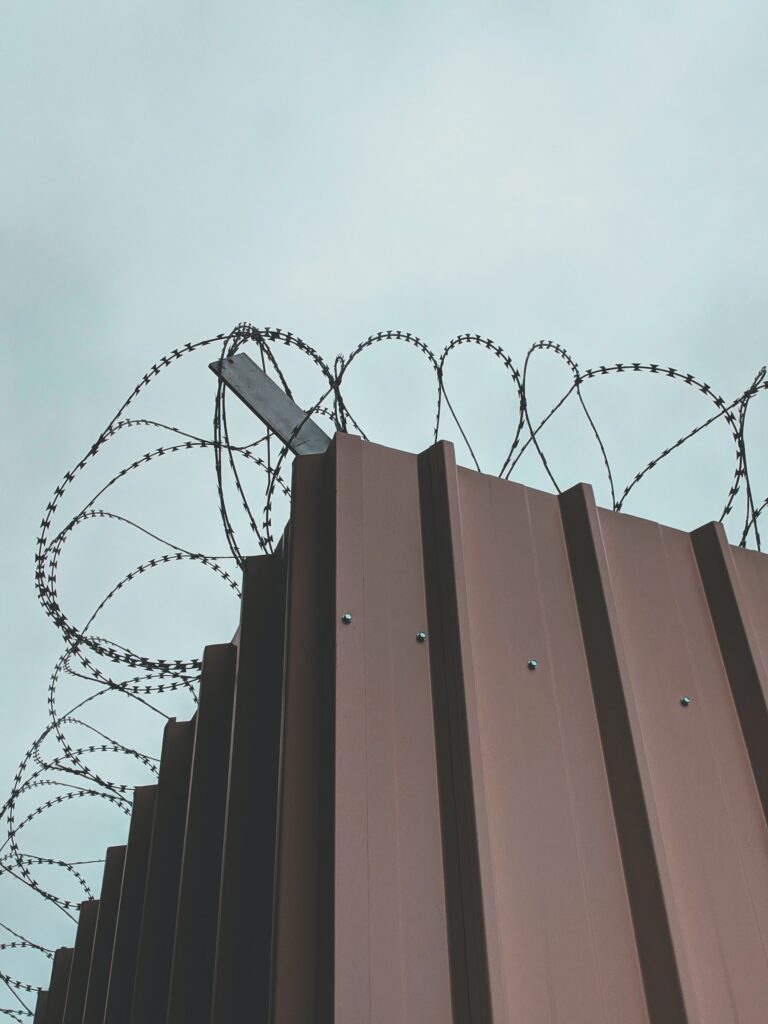In the rich tapestry of Israel’s history, there exists a group of individuals whose unwavering determination and unyielding spirit have become an indelible part of the country’s story. Known as the “Prisoners of Zion,” these courageous men and women embarked on a treacherous journey of sacrifice and perseverance in their relentless pursuit of freedom and the dream of reaching the Promised Land. Their compelling narratives serve as a testament to the enduring power of the Jewish spirit and stand as an inspiration for all who seek to understand the true essence of Aliyah.
The concept of Aliyah, the act of Jewish people returning to their ancestral homeland, has been at the core of the Zionist movement since its inception. It represents a deep-rooted connection to the land of Israel, fueled by an unshakable belief in the collective destiny of the Jewish people. The Prisoners of Zion embody this unwavering dedication, having chosen to risk their lives and endure unimaginable hardships to reach their beloved homeland.
Here in this article we will celebrate their resilience, honor their memory, and draw strength from their experiences as we navigate our own personal journeys towards fulfilling the dream of returning to our ancestral homeland.

Who are the Prisoners of Zion?
During various periods of history, from the early days of the establishment of Israel to the years of Soviet Jewish emigration, Jews faced tremendous challenges in their pursuit of Aliyah. They were subjected to oppression, persecution, and imprisonment by repressive regimes that sought to stifle their yearning for freedom and their desire to build a new life in Israel. Yet, even within the confines of prison walls, their spirits remained unbroken and their determination unyielding.
The stories of the Prisoners of Zion (as they are called) are as diverse as the backgrounds from which they emerged. From Anatoly Sharansky, who spent nine years in Soviet prisons before finally being released and making Aliyah, to Ethiopian Jews and Yemenite Jews who endured grueling journeys through war-torn landscapes to reach the land of their ancestors, each tale represents a unique chapter in the ongoing saga of Jewish resilience and the pursuit of Zion.
Through their suffering and sacrifice, the Prisoners of Zion have left an indelible mark on the history of the State of Israel. Their unwavering belief in the transformative power of Aliyah has inspired countless individuals around the world to pursue their own journeys back to Israel, often overcoming seemingly insurmountable obstacles.
Notable examples of Prisoners of Zion
The Prisoners of Zion encompass a diverse group of individuals who faced immense challenges and risks in their quest for Aliyah. One lesser-known fact is that not all Prisoners of Zion were Jewish. Among them were non-Jewish spouses or individuals who sympathized with the cause and were willing to endure imprisonment alongside their Jewish partners. Their solidarity demonstrated the universal appeal of Zionism and the deep bonds formed in the pursuit of freedom.
Here are a few examples:
- Anatoly Sharansky: Anatoly Sharansky, a prominent Soviet dissident and human rights activist, spent nine years in Soviet prisons for his activism on behalf of Jewish emigration to Israel. His unwavering spirit and determination made him a symbol of resistance against the oppressive regime. After his release, Sharansky made Aliyah and served as an influential politician in Israel.
- Natan (Sanya) Sharansky: Natan Sharansky, Anatoly Sharansky’s brother, also played a significant role in the Soviet Jewish emigration movement. He was sentenced to 13 years in prison on fabricated charges of espionage and treason but was eventually released after an international campaign advocating for his freedom. After his release, Natan Sharansky made Aliyah and became a prominent Israeli politician and human rights advocate.
- Meir Kahane: Meir Kahane was an American-born Rabbi and political activist who fought for the rights of Soviet Jews to emigrate to Israel. He was arrested multiple times for his activism and spent time in both Israeli and American prisons. Kahane founded the Jewish Defense League and later established the political party Kach, known for its controversial stance on Arab-Israeli relations.
- Yosef Mendelevich: Yosef Mendelevich was a key figure in the Soviet Jewry movement and a leader of the “Dymshits–Kuznetsov hijacking affair.” In 1970, Mendelevich, along with a group of Soviet Jewish activists, attempted to hijack a plane in an effort to escape to Israel. The plot failed, and Mendelevich was sentenced to 12 years in prison for his involvement. He eventually made Aliyah after his release and became a religious leader in Israel.
- Ethiopian Jews: During the 1980s and 1990s, thousands of Ethiopian Jews undertook treacherous journeys on foot, facing persecution and danger, to reach Israel. Many of them endured imprisonment in transit camps in Sudan, waiting for the opportunity to make Aliyah. Their struggle to overcome adversity and their ultimate arrival in Israel became a testament to their unwavering commitment to Zion and their longing to return to the Jewish homeland.
- Yuli Edelstein: Originally from the Soviet Union, he was an active member of the Zionist movement. Yuli was arrested in 1984 for his involvement in underground Zionist activities and spent three years in Soviet prisons and labor camps. After his release, Edelstein made Aliyah and became a prominent Israeli politician. He served as a member of the Knesset and held various ministerial positions, including Minister of Public Diplomacy and Diaspora Affairs.
- Ida Nudel: Ida Nudel was a prominent Soviet Jewish activist who fought for the right of Jews to emigrate to Israel. She faced persecution and multiple arrests for her advocacy work. In 1978, she was sentenced to four years of exile in Siberia for “malicious hooliganism.” Nudel’s perseverance and determination made her a symbol of resistance. She was eventually allowed to make Aliyah in 1987 and settled in Israel, where she continued to be an active advocate for human rights.
- Yosef Begun: Yosef Begun, a Jewish refusenik in the Soviet Union, was an active advocate for Jewish emigration to Israel. He was arrested in 1983 on charges of “anti-Soviet agitation and propaganda” and sentenced to seven years in a Soviet labor camp. Begun became an internationally recognized symbol of the struggle for Soviet Jewry. After his release, he made Aliyah and settled in Israel, where he continued his activism and served as a member of the Knesset.
- Vladimir Slepak: Vladimir Slepak was a Soviet Jewish activist who fought for the right of Jews to emigrate to Israel. Along with his wife, Masha, he endured persecution, arrests, and imprisonment for their activism. In 1978, Slepak was sentenced to five years of internal exile in Siberia. After intense international pressure, he was eventually allowed to make Aliyah in 1987. Slepak’s story became a symbol of the struggle for Soviet Jewish emigration and the determination to reach Israel.
The Refuseniks
The term “Refusenik” refers to Soviet Jews who were denied permission to emigrate to Israel during the Soviet era. Many Refuseniks faced harassment, loss of employment, and imprisonment for their attempts to apply for exit visas. Their courageous fight for the right to make Aliyah and their endurance in the face of adversity became a symbol of the struggle for Soviet Jewry.
In the struggle for Soviet Jewish emigration, the Refuseniks played a crucial role. However, what many people may not know is that their activism extended beyond the Soviet Union. Some Refuseniks established secret networks and engaged in covert operations to smuggle Jewish religious and cultural items into the USSR. These items, ranging from prayer books to Hebrew language materials, helped nourish the Jewish identity of those trapped behind the Iron Curtain.
While the narrative of the Prisoners of Zion often focuses on those who endured long years in Soviet prisons, it is important to recognize that imprisonment was not limited to that context. Ethiopian Jews, known as Beta Israel, faced their own trials and tribulations on their journey to Israel. During their perilous migration through war-torn territories, many were imprisone
Some lesser known-facts about the Prisoners of Zion
Another intriguing aspect of the Prisoners of Zion’s story lies in the international efforts to secure their release. Throughout history, individuals, organizations, and governments worldwide rallied for the freedom of these prisoners. The international support network for Soviet Jews included politicians, activists, and celebrities who used their influence to shed light on their plight. These collective efforts not only helped raise awareness but also put pressure on governments to prioritize human rights and allow for Jewish emigration.
Within the prison walls, the Prisoners of Zion demonstrated incredible strength and resilience. They organized secret study circles, teaching Jewish history, culture, and Hebrew language to their fellow inmates. These clandestine gatherings became a source of inspiration and a way to preserve their Jewish identity even in the most oppressive environments. Many prisoners composed poetry, wrote memoirs, and even created artwork during their time in confinement, leaving behind a rich cultural legacy.

It is also important to acknowledge that the struggle for Aliyah did not end with imprisonment. Even after release, many faced challenges adjusting to life in Israel. Language barriers, cultural adjustments, and the need to rebuild their lives presented new obstacles.
However, the Prisoners of Zion persevered, and their contributions to Israeli society are immeasurable. Many became influential figures in politics, academia, and the arts, using their experiences to advocate for justice, human rights, and the importance of Aliyah.
Conclusion
The Prisoners of Zion, with their unwavering faith, unyielding determination, and boundless courage, embody the essence of Aliyah. Their stories reveal lesser-known facts about their struggles, highlighting the solidarity of non-Jewish supporters, the covert efforts to sustain Jewish identity, the challenges faced by Ethiopian Jews, the international campaign for freedom, and the resilience displayed within prison walls.
The Prisoners of Zion continue to inspire us with their profound impact on Israeli society and their enduring legacy. As we celebrate their strength and sacrifice, let their stories ignite our own journey towards the Promised Land, embracing the spirit of the Prisoners of Zion who inspire Aliyah all throughout the world.
Their stories serve as a reminder of the enduring power of the human spirit and the unbreakable bond between the Jewish people and the land of Israel. Their unwavering determination, resilience, and sacrifice continue to inspire generations.




